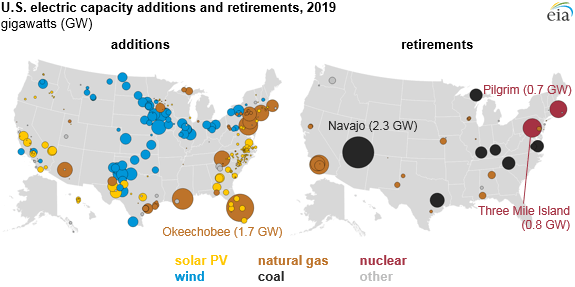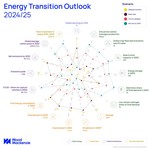Wind Will Be Largest Source of New Electric Generating Capacity in the U.S.
According to EIA’s latest inventory of electric generators, 23.7 GW of new capacity will come online in 2019 while 8.3 GW of capacity retires. The utility-scale capacity additions consist primarily of wind (46%), natural gas (34%), and solar photovoltaics (18%), with the remaining 2% consisting primarily of other renewables and battery storage capacity.
At the moment, a total of 10.9 GW of wind capacity is currently scheduled to come online in 2019. Most of it will come online only very late in the year which is typical for renewable capacity. The three states of Texas, Iowa, and Illinois will be home to more than half of the 2019 planned wind capacity additions.
Next in line is natural gas where the additions come primarily in the form of combined-cycle plants (6.1 GW) and combustion-turbine plants (1.4 GW). Most of the natural gas capacity is scheduled to be online by June 2019 in preparation for high summer demand. Of the planned natural gas capacity additions, 60% will occur in Pennsylvania, Florida, and Louisiana.
The 18% (4.3 GW) of expected new utility-scale solar power will be located in the states of Texas, California, and North Carolina. In addition to utility-scale capacity, EIA’s Short-Term Energy Outlook expects an additional 3.9 GW of small-scale solar PV capacity, such as distributed PV or rooftop systems, to enter service by the end of 2019.
Scheduled capacity retirements for 2019 primarily consist of coal (53%), natural gas (27%), and nuclear (18%), with a single hydroelectric plant in the state of Washington and other smaller renewable and petroleum capacity accounting for the remaining 2%.

Source: U.S. Energy Information Administration, Preliminary Monthly Electric Generator Inventory
- Source:
- EIA
- Author:
- Windfair Staff
- Email:
- press@windfair.net
- Keywords:
- EIA, USA; wind, solar, hydro, natural gas, retirements, new capacity, online, 2019, addition



























